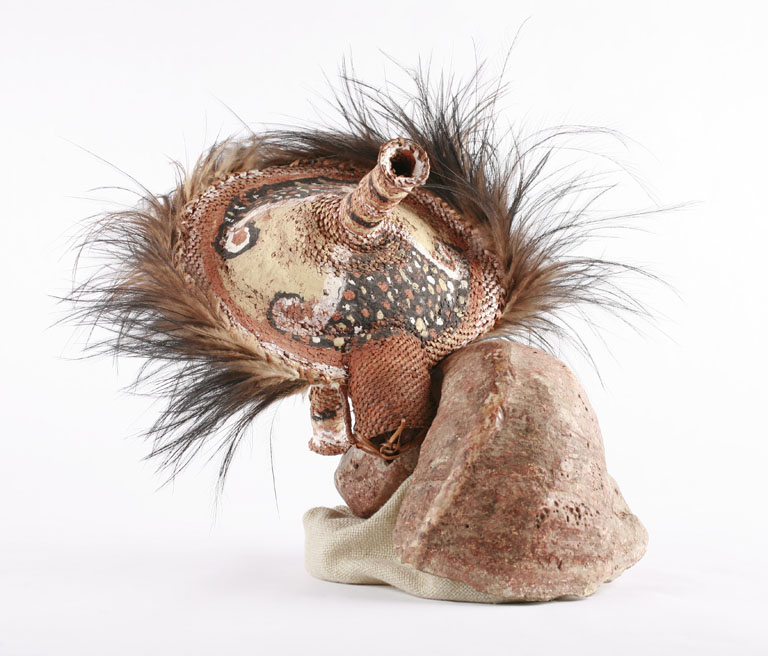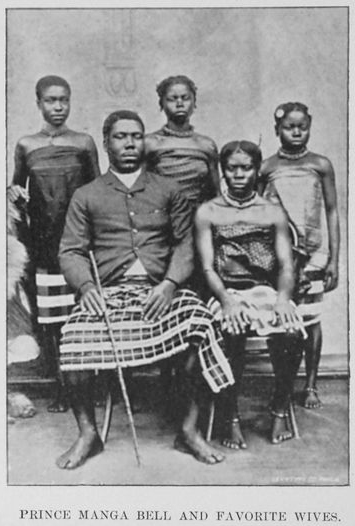|
Ayie
Ayie is the first of two stages of a traditional marriage ceremony of the Luo tribe of Kenya and Tanzania. The ceremony involves the payment of a bride price by the groom to the mother of the bride. ''Ayie'' is a Dholuo word, which means "I agree", referring to the fact that the mother of the bride accepts the bride price and agrees for the marriage to take place. Once the ceremony has taken place, the couple are considered to be married and the groom is at liberty to leave with the bride after the ceremony, although to complete the union a second bride price known as "keny", in the form of cattle, should be paid to the father of the bride not on the same day, but at a later date. As polygamy or "doho" is permitted in Luo tradition, a man may carry out Ayie several times with different women, and all marriages are recognized as legal under the Kenyan or Tanzanian law governing traditional marriage. However, if he also carries out a civil or religious marriage ceremony in Kenya, h ... [...More Info...] [...Related Items...] OR: [Wikipedia] [Google] [Baidu] |
Luo (Kenya And Tanzania)
The Luo are a Nilotic-speaking ethnic group native to western Kenya and the Mara Region of northern Tanzania. The Luo are the fourth-largest ethnic group (10.65%) in Kenya, after the Kikuyu (17.13%), the Luhya (14.35%) and the Kalenjin (13.37%). The Tanzanian Luo population was estimated at 1.1 million in 2001 and 3.4 million in 2020. They are part of a larger group of related Luo peoples who inhabit an area ranging from South Sudan, southwestern Ethiopia, northern and eastern Uganda, southwestern Kenya, and northern Tanzania, making them one of the largest ethnic groups in East Africa. They speak the Luo language, also known as ''Dholuo'', which belongs to the Western Nilotic branch of the Nilotic language family. Dholuo shares considerable similarities with languages spoken by other Luo peoples.Hammarström, Harald; Forkel, Robert; Haspelmath, Martin, eds. (2017). "Nilotic". Glottolog 3.0. Jena, Germany: Max Planck Institute for the Science of Human History. The Luo ... [...More Info...] [...Related Items...] OR: [Wikipedia] [Google] [Baidu] |
Luo People
The Luo are a Nilotic peoples, Nilotic-speaking ethnic group native to Nyanza Province, western Kenya and the Mara Region of northern Tanzania. The Luo are the fourth-largest ethnic group (10.65%) in Kenya, after the Kikuyu people, Kikuyu (17.13%), the Luhya people, Luhya (14.35%) and the Kalenjin people, Kalenjin (13.37%). The Tanzanian Luo population was estimated at 1.1 million in 2001 and 3.4 million in 2020. They are part of a larger group of related Luo peoples who inhabit an area ranging from South Sudan, southwestern Ethiopia, northern and eastern Uganda, southwestern Kenya, and northern Tanzania, making them one of the largest ethnic groups in East Africa. They speak the Luo dialect, Luo language, also known as ''Dholuo'', which belongs to the Western Nilotic branch of the Nilotic languages, Nilotic language family. Dholuo shares considerable similarities with languages spoken by other Luo peoples.Hammarström, Harald; Forkel, Robert; Haspelmath, Martin, eds. (2017). ... [...More Info...] [...Related Items...] OR: [Wikipedia] [Google] [Baidu] |
Kenya
Kenya, officially the Republic of Kenya, is a country located in East Africa. With an estimated population of more than 52.4 million as of mid-2024, Kenya is the 27th-most-populous country in the world and the 7th most populous in Africa. Kenya's capital and largest city is Nairobi. Its second-largest and oldest city is Mombasa, a major port city located on Mombasa Island. Other major cities within the country include Kisumu, Nakuru & Eldoret. Going clockwise, Kenya is bordered by South Sudan to the northwest (though much of that border includes the disputed Ilemi Triangle), Ethiopia to the north, Somalia to the east, the Indian Ocean to the southeast, Tanzania to the southwest, and Lake Victoria and Uganda to the west. Kenya's geography, climate and population vary widely. In western, rift valley counties, the landscape includes cold, snow-capped mountaintops (such as Batian, Nelion and Point Lenana on Mount Kenya) with vast surrounding forests, wildlife and ... [...More Info...] [...Related Items...] OR: [Wikipedia] [Google] [Baidu] |
Tanzania
Tanzania, officially the United Republic of Tanzania, is a country in East Africa within the African Great Lakes region. It is bordered by Uganda to the northwest; Kenya to the northeast; the Indian Ocean to the east; Mozambique and Malawi to the south; Zambia to the southwest; and Rwanda, Burundi, and the Democratic Republic of the Congo to the west. According to a 2024 estimate, Tanzania has a population of around 67.5 million, making it the most populous country located entirely south of the equator. Many important hominid fossils have been found in Tanzania. In the Stone and Bronze Age, prehistoric migrations into Tanzania included South Cushitic languages, Southern Cushitic speakers similar to modern day Iraqw people who moved south from present-day Ethiopia; Eastern Cushitic people who moved into Tanzania from north of Lake Turkana about 2,000 and 4,000 years ago; and the Southern Nilotic languages, Southern Nilotes, including the Datooga people, Datoog, who originated fro ... [...More Info...] [...Related Items...] OR: [Wikipedia] [Google] [Baidu] |
Bride Price
Bride price, bride-dowry, bride-wealth, bride service or bride token, is money, property, or other form of wealth paid by a groom or his family to the woman or the family of the woman he will be married to or is just about to marry. Bride dowry is equivalent to dowry paid to the groom in some cultures, or used by the bride to help establish the new household, and dower, which is property settled on the bride herself by the groom at the time of marriage. Some cultures may practice both simultaneously. Many cultures practiced bride dowry prior to existing records. The tradition of giving bride dowry is practiced in many East Asian countries, Eastern Europe, the Middle East, parts of Africa and in some Pacific Island societies, notably those in Melanesia. The amount changing hands may range from a token to continue the traditional ritual, to many thousands of US dollars in some marriages in Thailand, and as much as $100,000 in exceptionally large bride dowry in parts of Papua New G ... [...More Info...] [...Related Items...] OR: [Wikipedia] [Google] [Baidu] |
Dholuo Language
The Dholuo dialect () or ''Nilotic Kavirondo'', is a dialect of the Luo group of Nilotic languages, spoken by about 4.2 million Luo people of Kenya and Tanzania, who occupy parts of the eastern shore of Nam Lolwe (Lake Victoria) and areas to the south. It is used for broadcasts on Ramogi TV and KBC ( Kenya Broadcasting Corporation, formerly the ''Voice of Kenya''). Dholuo is mutually intelligible with Alur, Acholi, Adhola and Lango of Uganda. Dholuo and the aforementioned Uganda languages are all linguistically related to Dholuo of South Sudan and Anuak of Ethiopia due to common ethnic origins of the larger Luo peoples who speak Luo languages. It is estimated that Dholuo has 93% lexical similarity with Dhopadhola (Adhola), 90% with Leb Alur (Alur), 83% with Leb Achol (Acholi) and 81% with Leb Lango. However, these are often counted as separate languages despite common ethnic origins due to linguistic shift occasioned by geographical movement. Literacy (''Of the Luo f ... [...More Info...] [...Related Items...] OR: [Wikipedia] [Google] [Baidu] |
Polygamy
Polygamy (from Late Greek , "state of marriage to many spouses") is the practice of marriage, marrying multiple spouses. When a man is married to more than one wife at the same time, it is called polygyny. When a woman is married to more than one husband at the same time, it is called polyandry. In sociobiology and zoology, researchers use ''polygamy'' in a broad sense to mean any form of multiple mating. In contrast to polygamy, monogamy is marriage consisting of only two parties. Like "monogamy", the term "polygamy" is often used in a ''de facto'' sense, applied regardless of whether a State (polity), state recognizes the relationship.For the extent to which states can and do recognize potentially and actual polygamous forms as valid, see Conflict of marriage laws. In many countries, the law only recognises monogamous marriages (a person can only have one spouse, and bigamy is illegal), but adultery is not illegal, leading to a situation of ''de facto'' polygamy being allo ... [...More Info...] [...Related Items...] OR: [Wikipedia] [Google] [Baidu] |
Rice
Rice is a cereal grain and in its Domestication, domesticated form is the staple food of over half of the world's population, particularly in Asia and Africa. Rice is the seed of the grass species ''Oryza sativa'' (Asian rice)—or, much less commonly, ''Oryza glaberrima'' (African rice). Asian rice was domesticated in China some 13,500 to 8,200 years ago; African rice was domesticated in Africa about 3,000 years ago. Rice has become commonplace in many cultures worldwide; in 2023, 800 million tons were produced, placing it third after sugarcane and maize. Only some 8% of rice is traded internationally. China, India, and Indonesia are the largest consumers of rice. A substantial amount of the rice produced in developing nations is lost after harvest through factors such as poor transport and storage. Rice yields can be reduced by pests including insects, rodents, and birds, as well as by weeds, and by List of rice diseases, diseases such as rice blast. Traditional rice polyc ... [...More Info...] [...Related Items...] OR: [Wikipedia] [Google] [Baidu] |
Smoked Beef
Smoked meat is the result of a method of preparing red meat, white meat, and seafood which originated in the Paleolithic Era. Smoking adds flavor, improves the appearance of meat through the Maillard reaction, and when combined with curing it preserves the meat. When meat is cured then cold-smoked, the smoke adds phenols and other chemicals that have an antimicrobial effect on the meat. Hot smoking has less impact on preservation and is primarily used for taste and to slow-cook the meat. Interest in barbecue and smoking is on the rise worldwide. Smoking with wood Generally meat is smoked using hardwood or wood pellets made from hardwood; softwood is not recommended due to increased PAH from the resin. Wood smoke adds flavor, aroma, and helps with preservation. There are two types of smoking: cold smoking generally occurs below and has more preservative value. Hot smoking generally occurs above . Most woods are seasoned and not used green. There are many types of wood ... [...More Info...] [...Related Items...] OR: [Wikipedia] [Google] [Baidu] |




